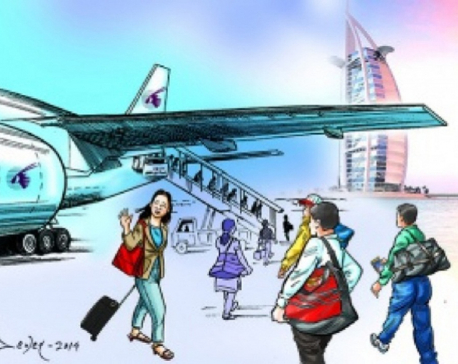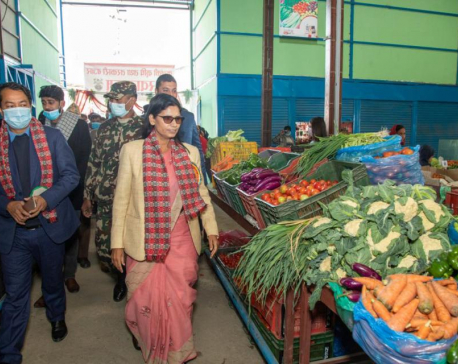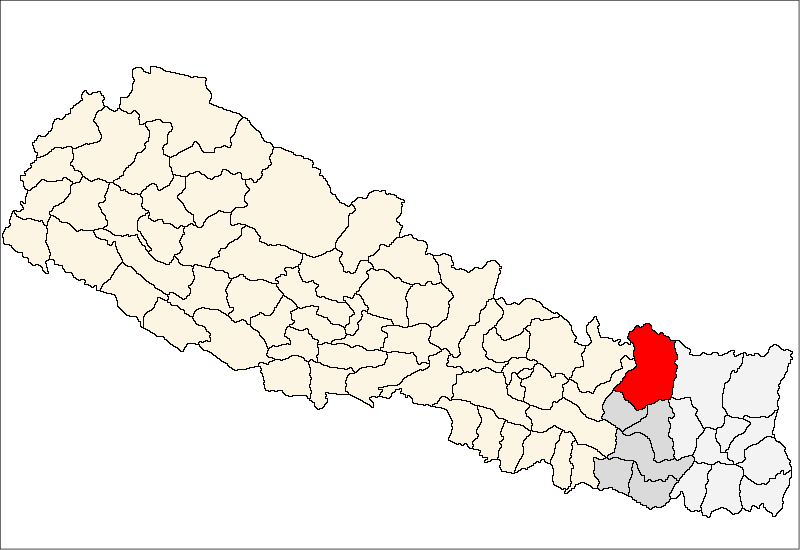
OR
#International Day of Family Remittances
The Formality of Informal Remittance Channels
Published On: June 16, 2023 08:30 AM NPT By: Aslesh Shrestha and Anuj Tiwari

More from Author
The economic shocks brought by the COVID-19 pandemic have shown how crucial remittances have become for developing countries, especially for the section of their population whose domestic income sources were constrained due to the lockdown. Looking at the overall global trends, remittance flow has been increasing steadily, including in the years hit by the pandemic. World Bank statistics show that over half the remittance inflow, 794 billion (USD) in 2022, goes to Lower Middle-Income Countries (LMIC) and Lower Income Countries (LIC). In Nepal, the total remittance inflow in the year 2022 was USD 7.5 billion, which is more than double of the country’s total Foreign Direct Investments (FDI) and Official Development Assistance (ODA) received in the same period.
Over the past decade, the boost in remittance income has had a significant impact on reducing Nepal’s poverty, which development can only wish for, as it has directly increased the disposable income of the poorest sections of the population. Simultaneously, it has contributed to national revenue and helped to maintain the country’s foreign exchange reserves, which are constantly under strain due to the high level of imports. But, even with the flow of money increasing annually, the high costs of remittance through formal banking channels are a major disincentive for a migrant worker and their family.
The global average cost for sending $200 is at 6.24%, meaning a Nepali migrant worker sending back Rs. 20,000 to his family would have to bear a cost of Rs. 1,248 on an average. While the costs for new digital transfers can go as low as 0.3%, traditional remittance channels have become much costlier, going over 20% in migration corridors with low mobility. This has forced migrant workers to use informal channels, which tend to be affordable and convenient for digitally illiterate migrant workers or their families. However, these informal channels of laundering the money are risky for migrant workers and come at a significant loss of revenue for the economy.
The nature of the transfers using informal channels makes estimations difficult. However, in the case of Nepal, the central bank authorities have estimated it to be around 30% of the total transfers. Needless to say, bringing that amount of money through formal channels could significantly boost the government’s revenue and impact the overall Balance of Payments (BoP) account for economies like Nepal. The cost of sending money to Nepal is currently lower than the global average, ranging from 2.64% to 4.31% in the main corridors. Even then, migrants from low-income households generally have a higher negative cost elasticity of sending money, and seek informal/illegal channels either due to convenience or to save money.
Apart from the cost factor, the lack of digital and financial literacy at the sender and/or receiver’s end is also an important factor that compels a migrant worker to use this medium for monetary transfers. In some of the Gulf Cooperation Council (GCC) countries, the contractual obligations and the power relations between low-skilled migrant workers and their employer or supervisor make it difficult for them to take time off from work to visit a bank for remitting the money. So, contacting informal agents to send money becomes a convenient and cost-effective means, considering the opportunity costs of losing working hours. Migrant workers whose passports are on hold with their respective companies or owners, or those working without legal status are also resigned to using these informal channels. These are cumulative problems, which have regularly brought Nepal under international scrutiny from the global anti-money laundering body. Nepal was in FATF’s (Financial Action Task Force) grey-list from 2008-2014.
Nepal’s outmigration trend is slowly catching-up to pre-COVID-19 levels, and the remittance figures are comparatively higher every fiscal year. But the struggles remain the same for low-skilled migrant workers and their families. The compulsory enrolment in the government’s Social Security Fund (SSF) has only added to the already cumbersome administrative process that prospective migrant workers have to navigate to obtain a work permit. Once enrolled in the SSF schemes, workers are required to remit their contribution regularly, potentially adding to existing remitting costs. The promise of a secure future through a contribution-based pension scheme can hardly appeal to workers and their families who have immediate pressing needs. Therefore, providing training to prospective workers instead on how to use digital apps for secure and affordable transactions could offer a longer-term solution that also benefits the government by drawing the workers away from informal channels.
Lately, there have also been some encouraging steps taken by Nepali banks and financial institutions targeting migrant households, through which they provide a 1% additional interest rate on deposits and reserve 10% of total shares on Initial Public Offerings (IPO) for migrant workers. Nepal Rastra Bank (NRB) often offers a long-term investment opportunity to migrant workers in the form of Foreign Employment Saving Bonds. Such scheme encourages migrant workers and their families to make voluntary savings. The government should motivate BFIs to bring more attractive schemes to encourage migrant workers to remit through formal banking channels, which could, eventually, lead to increased public investments in the future. Even if few BFIs appeared to have taken that route, it is still a long way to go to cater to the needs of low-wage and low-literate migrant workers. One way to do that is by increasing the number of formal remitting channels - providing the options for remitters to choose the cheaper options.
As much as we talk about expanding Nepal’s job market in the long run, by investing in productive sectors that create more jobs to keep domestic labor from migrating, the government seems to have acknowledged struggle, sweat, and sacrifice of remitters and their contribution to the economy, which is why it is adopting a policy of expanding labor destinations. We have also seen how a drop in remittance inflow can have a significant impact on Nepal’s import-dependent economy. Therefore, it is crucial that it widens the sender base by providing better incentives and training people on digital and financial processes for increasing formal remittance inflow.
You May Like This

Around 400,000 Nepalis left their homeland for foreign jobs in past six months
KATHMANDU, Nov 8: A total of 372,356 people left the country seeking jobs in foreign countries in the past six months. Read More...

Agriculture and Vegetable Market opens its outlet in Kalanki to provide direct market access to farmers
KATHMANDU, Jan 30: The Agriculture and Vegetable Market has started its outlet in Kalanki, Kathmandu from Friday. ... Read More...

Qatar announces end to Kafala, to raise basic wage
KATHMANDU, Oct 18: Qatar has endorsed new legislations that would bring an end to the Kafala system, an abusive sponsorship... Read More...




Just In
- NEA Provincial Office initiates contract termination process with six companies
- Nepal's ready-made garment exports soar to over 9 billion rupees
- Vote count update: UML candidate continues to maintain lead in Bajhang
- Govt to provide up to Rs 500,000 for building houses affected by natural calamities
- China announces implementation of free visa for Nepali citizens
- NEPSE gains 14.33 points, while daily turnover inclines to Rs 2.68 billion
- Tourists suffer after flight disruption due to adverse weather in Solukhumbu district
- Vote count update: NC maintains lead in Ilam-2














Leave A Comment